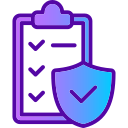Secure Habits for Frontline and Back-Office Teams
Make unique passphrases normal with password managers and clear guidance on when to use step-up authentication. Teach people how to spot fake prompts and unexpected login approvals. Invite employees to post their favorite passphrase-building trick on the intranet to help colleagues adopt stronger patterns.
Secure Habits for Frontline and Back-Office Teams
Updates, encrypted storage, and screen locks are table stakes, especially on shared or travel devices. Show how to check update status, verify Wi‑Fi networks, and safely use virtual private access. Encourage teams to schedule a monthly ten‑minute “device tune‑up” together to keep everyone accountable.
Secure Habits for Frontline and Back-Office Teams
Before releasing funds, require dual control and known-number callbacks, especially for new beneficiaries or changed banking details. Practice scripts that feel courteous yet firm. Ask teams to share a favorite verification phrase that preserves client rapport while confidently blocking social engineering attempts.
Secure Habits for Frontline and Back-Office Teams
Lorem ipsum dolor sit amet, consectetur adipiscing elit. Ut elit tellus, luctus nec ullamcorper mattis, pulvinar dapibus leo.








